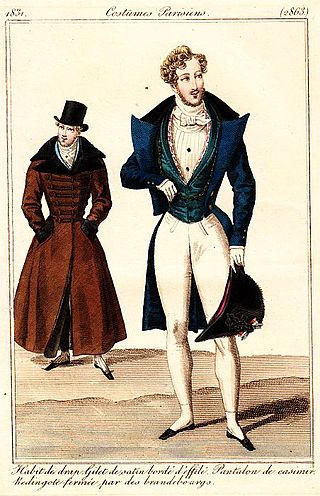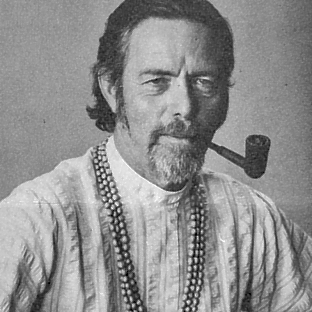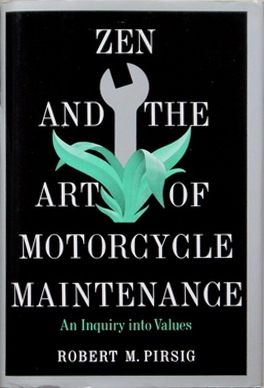Bohemian types
Stover classifies Bohemians into five mindsets/styles. He says Bohemians are "not easily classified like species of birds," noting there are crossovers and hybrids.
Nouveau Bohemian
The Nouveau Bohemian: This type of Bohemian harmonizes elements of traditional Bohemian ideology with contemporary culture without losing sight of the basic tenets—the glamour, art, and nonconformity. While Nouveaus may suffer poetically, artistically, and romantically, they have what appears to be, at first, one advantage over other Bohemians: the Nouveau has money.
Gypsy Bohemian
The Gypsy Bohemian: The expatriate types. They create their own Gypsy nirvana wherever they go. They are folksy flower children, hippies, psychedelic travelers, fairy folk, dreamers, Deadheads, medievalists, anachronistic throwbacks to a more romantic time. Gypsies scatter like seeds on the wind, don't own a watch, show up on your doorstep and disappear in the night. They are happy to sleep in your barn and may have done so without your awareness.
Beat Bohemian
The Beat Bohemian: Reckless, raggedy, rambling, drifting, down-and-out, Utopia-seeking. It may seem like Beats suffer for their ideals, but they have let go of material desire. Beats are free spirits. They believe in freedom of expression. They travel light, but there is always a book or a notebook in their pocket. Beats jam, improvise, extemporize, blow ethereal notes into the universe, write poetry, ramble and wreck cars. They live on the edge of ideas. They take the part and then make up their own lines.
Zen Bohemian
The Zen Bohemian: No other Bohemians fathom the transient, green and meditative quality of life better than the Zens, even if they are in a rock band, which they often are. The Zen is post-Beat, a Bohemian whose quest has evolved from the artistic, smoky, literary and spiritual wanderlust to the spiritually lustful.
Dandy Bohemian
The Dandy Bohemian: A little seedy, a little haughty, slightly shredded or threadbare, dandies are the most polished of all Bohemians, even when their clothes are tattered. The Dandy aspires to old money without the money. You are more likely to find unpopular liqueurs such as Chartreuse and Earl Grey brandy in the Dandy home than a six-pack of Budweiser.

A dandy is a man who places particular importance upon physical appearance and personal grooming, refined language and leisurely hobbies. A dandy could be a self-made man in person and persona, who imitated an aristocratic style of life, despite his middle-class origin, birth, and background, especially in the Britain of the late-18th and early-19th centuries.

A wok is a deep round-bottomed cooking pan of Chinese origin. It is believed to be derived from the South Asian karahi. It is common in Greater China, and similar pans are found in parts of East, South and Southeast Asia, as well as being popular in other parts of the world.

The Book of Five Rings is a text on kenjutsu and the martial arts in general, written by the Japanese swordsman Miyamoto Musashi around 1645. Many translations have been made, and it garnered broad attention in East Asia and worldwide. For instance, some foreign business leaders find its discussion of conflict to be relevant to their work. The modern-day Hyōhō Niten Ichi-ryū employs it as a manual of technique and philosophy.

Alan Wilson Watts was an English writer, speaker, and self-styled "philosophical entertainer", known for interpreting and popularising Buddhist, Taoist, and Hindu philosophy for a Western audience.

Zen and the Art of Motorcycle Maintenance: An Inquiry into Values is a book by Robert M. Pirsig first published in 1974. It is a work of fictionalized autobiography and the first of Pirsig's texts in which he discusses his concept of Quality.

Art glass is a subset of glass art, this latter covering the whole range of art made from glass. Art glass normally refers only to pieces made since the mid-19th century, and typically to those purely made as sculpture or decorative art, with no main utilitarian function, such as serving as a drinking vessel, though of course stained glass keeps the weather out, and bowls may still be useful.

Bohemianism is a social and cultural movement that has, at its core, a way of life away from society's conventional norms and expectations. The term originates from the French bohème and spread to the English-speaking world. It was used to describe mid-19th-century non-traditional lifestyles, especially of artists, writers, journalists, musicians, and actors in major European cities.

Ottmar Liebert is a German guitarist, songwriter and producer best known for his Spanish-influenced music. A five-time Grammy Award nominee, Liebert has received 38 Gold and Platinum certifications in the United States, as well as certifications in Canada, Australia and New Zealand. His debut album Nouveau Flamenco (1990) was certified Platinum in the United States.
Nouveau riche, new rich or new money is a social class of the rich whose wealth has been acquired within their own generation, rather than by familial inheritance. These people previously had belonged to a lower social class and economic stratum (rank) within that class and the term implies that the new money, which constitutes their wealth, allowed upward social mobility and provided the means for conspicuous consumption, the buying of goods and services that signal membership in an upper class. As a pejorative term, nouveau riche affects distinctions of type, the given stratum within a social class; hence, among the rich people of a social class, nouveau riche describes the vulgarity and ostentation of the newly rich person who lacks the worldly experience and the system of values of old money, of inherited wealth, such as the patriciate, the nobility, and the gentry.

Mikhail Aleksandrovich Vrubel was a Russian painter, draughtsman, and sculptor. A prolific and innovative master in various media such as painting, drawing, decorative sculpture, and theatrical art, Vrubel is generally characterized as one of the most important artists in Russian symbolist tradition and a pioneering figure of Modernist art.

Korean gardens are a type of garden described as being natural, informal, simple and unforced, seeking to merge with the natural world. They have a history that goes back more than two thousand years, but are little known in the west. The oldest records date to the Three Kingdoms period when architecture and palace gardens showed a development noted in the Korean History of the Three Kingdoms.
The Bible in Spain, published in London in 1843, is a travel book by the British writer George Borrow (1803–1881). It was a popular work when it appeared, running through several editions. Borrow tells of his travels through Spain while working as a Bible salesman in 1835–1838, during the Carlist Civil War. His activities on behalf of the Bible Society encountered much opposition from the Roman Catholic Church and from politicians.

Boho-chic is a style of fashion drawing on various bohemian and hippie influences, which, at its height in late 2005 was associated particularly with actress Sienna Miller, model Kate Moss in the United Kingdom and actress/businesswoman Mary-Kate Olsen in the United States. It has been seen since the early 1990s and, although appearing to wane from time to time, has repeatedly re-surfaced in varying guises. Many elements of boho-chic became popular in the late 1960s and some date back much further, being associated, for example, with pre-Raphaelite women of the mid-to-late 19th century.

A Vardo is a four-wheeled horse-drawn vehicle used by British Romanichal Travellers as their home. It is pulled by a single horse in shafts, sometimes with a second horse hitched on its right side outside the shafts to help pull heavier loads or assist in pulling up a hill. The vehicle is typically highly decorated, intricately carved, brightly painted, and even gilded. The Romanichal Traveller tradition of the vardo is seen as a high cultural point of both artistic design and a masterpiece of woodcrafter's art.

"Bohemian Like You" is a song by American alternative rock band the Dandy Warhols. The song was written by frontman Courtney Taylor-Taylor after seeing a woman pull up in her car to the traffic lights outside his apartment. It was released as the second single from the band's third studio album, Thirteen Tales from Urban Bohemia, on July 11, 2000.

Els Quatre Gats is a café in Barcelona, Catalonia, Spain, that famously became a popular meeting place for famous artists throughout the modernist period in Catalonia, known as Modernisme. The café opened on 12 June 1897 in the famous Casa Martí, and served as a hostel, bar and cabaret until it eventually became a central meeting point for Barcelona's most prominent modernist figures, such as Pablo Picasso and Ramon Casas i Carbó. The bar closed due to financial difficulties in June 1903, but was reopened and eventually restored to its original condition in 1989.
The Pacific Zen Institute (PZI), is a Zen Buddhist school centered in Santa Rosa, California, with affiliates in Oakland, San Mateo, Santa Barbara, and Waco, Kentucky. Its students live and practice throughout North America, South America, and Asia. Established in 1999, Pacific Zen's stated mission is to "create a culture of transformation through meditation, koans, conversation, and the arts." Its founding director, John Tarrant, was the first dharma heir to Robert Baker Aitken, in the line of the Sanbo Kyodan school of koan Zen.

Soleares is one of the most basic forms or palos of Flamenco music, probably originating among the Calé Romani people of Cádiz or Seville in Andalusia, the most southern region of Spain. It is usually accompanied by one guitar only, in phrygian mode "por arriba" ; "Bulerías por soleá" is usually played "por medio". Soleares is sometimes called "mother of palos" although it is not the oldest one and not even related to every other palo
The term Romani style refers to the way Eastern European music is played in coffeehouses and restaurants, at parties, and sometimes on-stage in European cities. Music played in this style differs from actual Romani music played by Romani and Sinti people, many of whom regard the term "gypsy" as a slur when applied to their community.

The Bohemian G-yurl and the Unapproachable Pole is a musical burlesque in two acts, with a score by Meyer Lutz to a libretto by Henry James Byron, which played under the management of John Hollingshead at the Gaiety Theatre in London in 1877. It was a parody of the popular opera The Bohemian Girl composed by Michael William Balfe with a libretto by Alfred Bunn.















